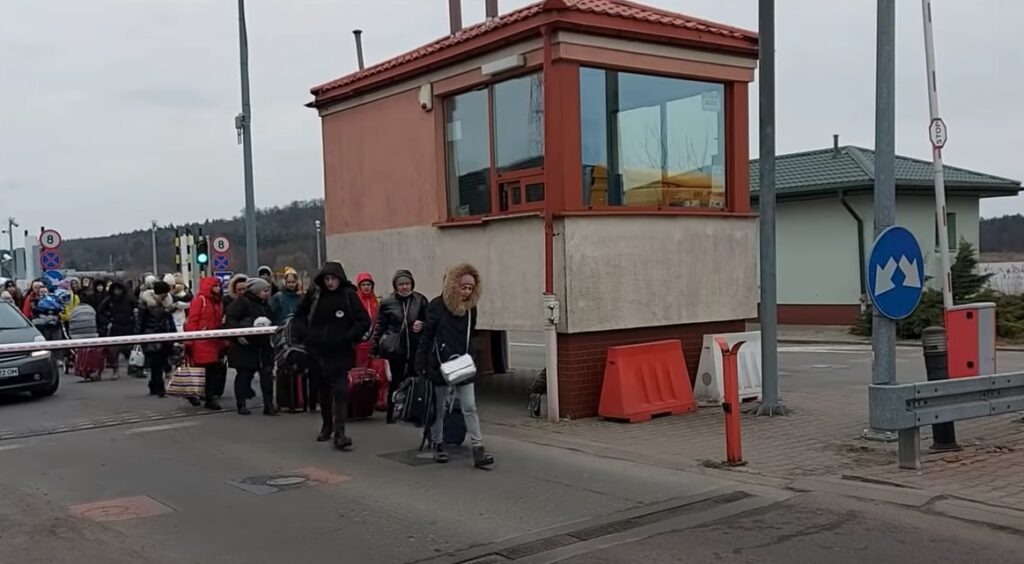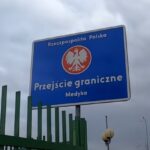Is this the European Union that we have dreamt of? Is this the European Union that we have been tempted with? A united continent, with no borders, a continent blessed with peace and fraternity, with the well-being of its residents, blessed with the preservation of everything that singles the continent out from the rest of the world? As it is, European values transpired as the values that are not shared by the overwhelming majority of Europeans. These are same-sex marriages, gender mainstreaming, extirpation of all traditional values and mass immigration that increasingly changes the racial make-up of the European population and – what necessarily follows – the continent’s culture.
Up to very recently it was the Western part of Europe – the so-called old Union – that was subjected to the programmed and systematic influx of peoples from the Third World. The new members of the union – especially Poland, Czechia, Slovakia, Hungary – resisted the policy of mass immigration, running afoul of the Brussels’ commissioners and ruffling a few feathers among Western intellectuals. The year 2015 – that notorious year during which Germany is believed to have accepted between 800.000 and 1,200.000 arrivals – made the blood of Eastern Europeans run cold. They wanted to mingle with the French, the British, the Italians or the Germans, but were totally unprepared to regard the Afghanis or Somalis as new Europeans! The cultural, religious, mental gap was far too large to be bridged as was the pace with which those ethnic changes were effected! It did not go unnoticed either that Third World immigrants were clearly used as a weapon: a look at Turkey’s policy said it all. Also, the acceptance of tens of thousands of Third World immigrants was perceived by both Western and Eastern Europeans as mere virtue signalling and – in the case of the new member-states – as a sign of their submission the Brussels (Paris and Berlin). Add to this the indiscriminate procedure of letting foreigners into European countries: there was no way of screening the masses of arrivals whether they contained common criminals, mafiosi, terrorists and the like.

The determination of the East European member-states was clearly shown by the decision of Hungary’s Prime Minister Viktor Orban to have a fence put up along the country’s border with Serbia and – as recently as in 2021 – by Poland erecting similar structures along the border with Belarus, which attempted to destabilize its Western neighbour through letting the thousands of immigrants across the frontier. Then came the war. The war between Russia and Ukraine, and the Polish, Slovak, Czech and Romanian authorities opened the doors of their countries wide to accept as many refugees as it takes. As anybody could see for himself, these were not merely Ukrainians who flooded the aforementioned states, but also large numbers of people of colour, among them some of those who had not succeeded in crossing the border between Belarus and Poland a few months earlier. To make things even worse, it was lots and lots of criminals who wound their way from Ukraine to Poland, Slovakia and Czechia, criminals who were let loose from Ukrainian prisons by the decision of Ukraine’s President Vladimir Zelensky. It is said that as many as one million and a half of Ukrainians have entered Poland within the latest few weeks. They have entered Poland, a country, where as many as two or three millions of their compatriots had already been residing! And just as was the case in Germany or Sweden in 2015, so is it at present in Poland, where Ukrainian refugees enjoy all the imaginable privileges – comparable to those granted to the Somalis, Afghans and Syrians in Germany and Sweden – complete with train or coach travel free of charge, accommodation, medical care, preferences in receiving employment plus “pocket money”. The country that up till now has boasted about its ethnic uniformity is not ethnically uniform anymore.
Was that what the European Union was all about? Did Europeans back in the 1990s want it that way? Is this policy of mixing large masses of people not inviting trouble in the long run? How long will the European Union commissioners be able to control and pacify the minds of indigenous Europeans? Consider the following: Europe has seen multinational, multicultural unions throughout its history. They all – the Polish-Lithuanian Commonwealth, Austria (later renamed to Austria-Hungary), Yugoslavia and the Soviet Union – inevitably and unavoidably disintegrated or were swallowed up by ethnically monolithic neighbours. And mind you: the likes of the Polish-Lithuanian Commonwealth, Austria-Hungary, and Yugoslavia were unions of European peoples and predominantly Christians at that! How then can starker cultural, religious and racial differences contribute to the permanency of the current union? Unfortunately, again and again ideology takes the better of reason and historical experience. Europe is increasingly becoming a seething cauldron of contradictions and conflicts, which does not bode well.




